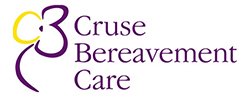The true number of people who take their own lives is being masked by coroners, academics have warned.

Many more inquests are ending in “narrative verdicts” rather than a ruling that someone killed themselves, often because of caution over their intention. But it is feared that this may mean up to 6 per cent of suicides being wrongly classified as accidents, which could be “masking the effects of the economic crisis on suicide”. In an editorial published in the British Medical Journal, Prof David Gunnell at the University of Bristol and colleagues said:
“This increased use of narrative verdicts has important effects on the estimation of national suicide rates because these verdicts present coding difficulties for the Office for National Statistics – when suicide intent is unclear such deaths are coded as accidents.”
Official figures show there were 4,648 suicides in England and Wales in 2009, based on the verdicts given by coroners after inquests into unexpected deaths. But many hangings, overdoses and poisonings are being treated as possible accidents, with coroners ending inquests in narrative verdicts that give an account of how the death occurred in a few sentences. The number of narrative verdicts has risen from just 111 in 2001 to 3,012 – more than one in 10 inquests – in 2009. This is despite the fact that suicide is sometimes strongly implied in the verdict, with phrases used such as
“deceased took his own life with an accidental overdose”,
according to the BMJ study. If all deaths from hanging and poisoning were classed as suicides rather than given narrative verdicts, the suicide rate would be 6 per cent higher. This would account for almost a third of the National Suicide Prevention Strategy’s target of reducing suicides by 20 per cent. But even this figure could be an underestimate because the ONS did not include all common methods of killing oneself. The academics warn: “As the use of narrative verdicts rises, so too may the underestimation of suicide. “The consequences of this could be incorrect rate estimates, misleading evaluations of national and local prevention activity, and masking of the effects of the current economic crisis on suicide.
“Furthermore, because coroners vary greatly in their use of narrative verdicts, suicide rates may (falsely) seem to decline in areas served by coroners who make most use of such verdicts.”
But Prof Louis Appleby, chairman of the Government’s National Suicide Prevention Strategy Advisory Group, insisted:
“There is nothing new in finding that some probable suicides are omitted from official statistics because of doubts about the person’s intent.“
Coroners used to record verdicts of accident or misadventure in many such cases, now they may record a narrative verdict.
“There is no reason to doubt the fall in suicide in England in the last decade, though of course we should continue to examine how narrative verdicts are used.”
Article By : Terry Rigby – Forward For Life











